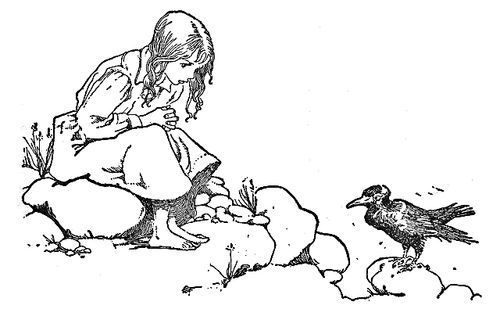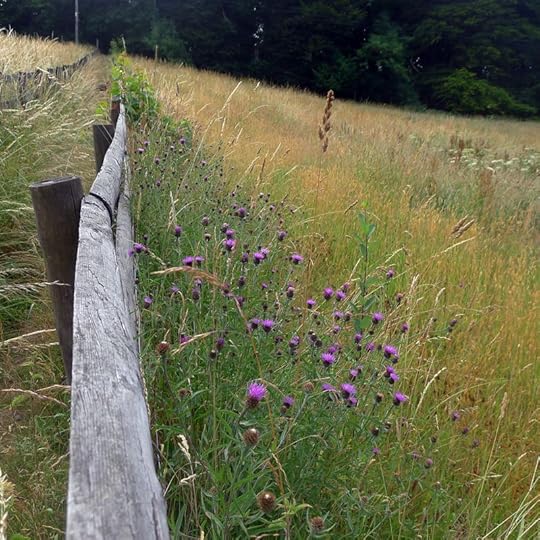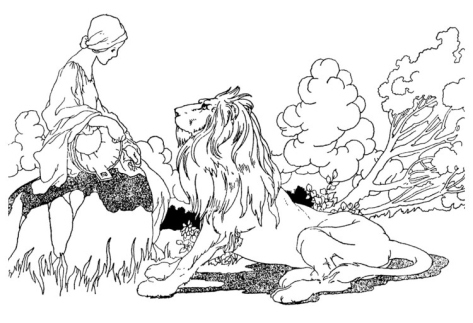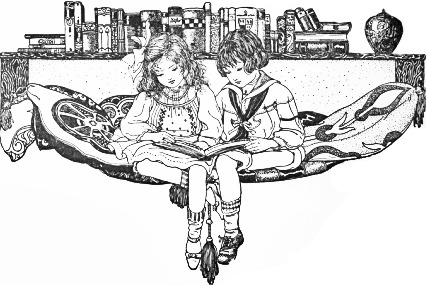Breathing in the world
Today's quotes come from Jane Yolen, in honor of her visit to Chagford this week. They are taken primarily from Touch Magic: Fantasy, Faerie & Folklore in the Literature of Childhood and Take Joy: A Writer's Guide to Loving the Craft, both of which I highly recommend.
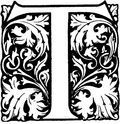 he great archetypal stories," writes Jane, "provide a framework or model for an
he great archetypal stories," writes Jane, "provide a framework or model for an
individual's belief system. They are, in Isak Dinesen's marvelous
expression, 'a serious statement of our existence.' The stories and
tales handed down to us from the cultures that proceded us were the most
serious, succinct expressions of the accumulated wisdom of those
cultures. They were created in a symbolic, metaphoric story language and
then hones by centuries of tongue-polishing to a crystalline
perfection....
"And if we deny our children their cultural,
historic heritage, their birthright to these stories, what then? Instead
of creating men and women who have a grasp of literary allusion and
symbolic language, and a metaphorical tool for dealing with the problems
of life, we will be forming stunted boys and girls who speak only a
barren language, a language that accurately reflects their equally
barren minds. Language helps develop life as surely as it reflects life.
It is the most important part of the human condition."
"In fantasy stories we learn to understand the differences of others, we
learn compassion for those things we cannot fathom, we learn the
importance of keeping our sense of wonder. The strange worlds that exist
in the pages of fantastic literature teach us a tolerance of other
people and places and engender an openness toward new experience.
Fantasy puts the world into perspective in a way that 'realistic'
literature rarely does. It is not so much an escape from the
here-and-now as an expansion of each reader's horizons."
"In fantasy stories we learn to understand the differences of others, we
learn compassion for those things we cannot fathom, we learn the
importance of keeping our sense of wonder. The strange worlds that exist
in the pages of fantastic literature teach us a tolerance of other
people and places and engender an openness toward new experience.
Fantasy puts the world into perspective in a way that 'realistic'
literature rarely does. It is not so much an escape from the
here-and-now as an expansion of each reader's horizons."
"Just as a child is born with a literal hole in his head, where the
bones slowly close underneath the fragile shield of skin, so the child
is born with a figurative hole in his heart. What slips in before it
anneals shapes the man or woman into which that child will grow. Story
is one of the most serious intruders into the heart."
“Children’s books change lives. Stories pour into the hearts of children and help make them what they become.”
"We have spent a good portion of our last decades erasing the past. The episode of the gas ovens is closed, wrapped in the mist of history. It is as if it never happened. At the very least, which always suprises me, it is considered a kind of historical novel, abstract and not particularly terrifying.
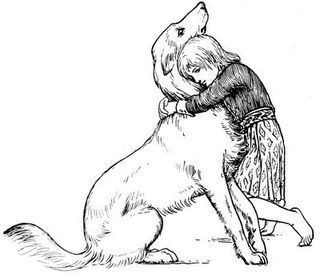 "It is important for children to have books that confront the evils and do not back away from them. Such books can provide a sense of good and evil, a moral reference point. If our fantasy books are not strong enough -- and many modern fantasies shy away from asking for sacrifice, preferring to profer rewards first as if testing the faerie waters -- then real stories, like those of Adolf Hitler's evil deeds, will seem so much slanted news, not to be believed.
"It is important for children to have books that confront the evils and do not back away from them. Such books can provide a sense of good and evil, a moral reference point. If our fantasy books are not strong enough -- and many modern fantasies shy away from asking for sacrifice, preferring to profer rewards first as if testing the faerie waters -- then real stories, like those of Adolf Hitler's evil deeds, will seem so much slanted news, not to be believed.
"Why do so many fantasies shy away from Tough Magic? Why do they offer sweet fairy dances in the moonlight without the fear of the cold dawn that comes after? Because writing about Tough Magic takes courage on the author's part as well. To bring up all the dark, unknown, frightening images that live within each of us and try to make some sense of them on the page is a task that takes courage indeed. It is not an impersonal courage. Only by taking great risks can the tale succeed. Ursula Le Guin has written: 'The artist who goes into himself most deeply -- and it is a painful journey -- is the artist who touches us most closely, speaks to us most clearly.' "

" 'Stories,' he'd said, his voice low and almost husky, 'we are made up of
stories. And even the one's that seem the most like lies can be our
deepest hidden truths.' " (from Briar Rose)
The illustrations above are by Honor Charlotte Appleton (1879-1951), Eleanor Vere Boyle (1825-1916), Charles Robinson (1870-1937), John Dickson Batten (1860-1932) and
Terri Windling's Blog
- Terri Windling's profile
- 708 followers



